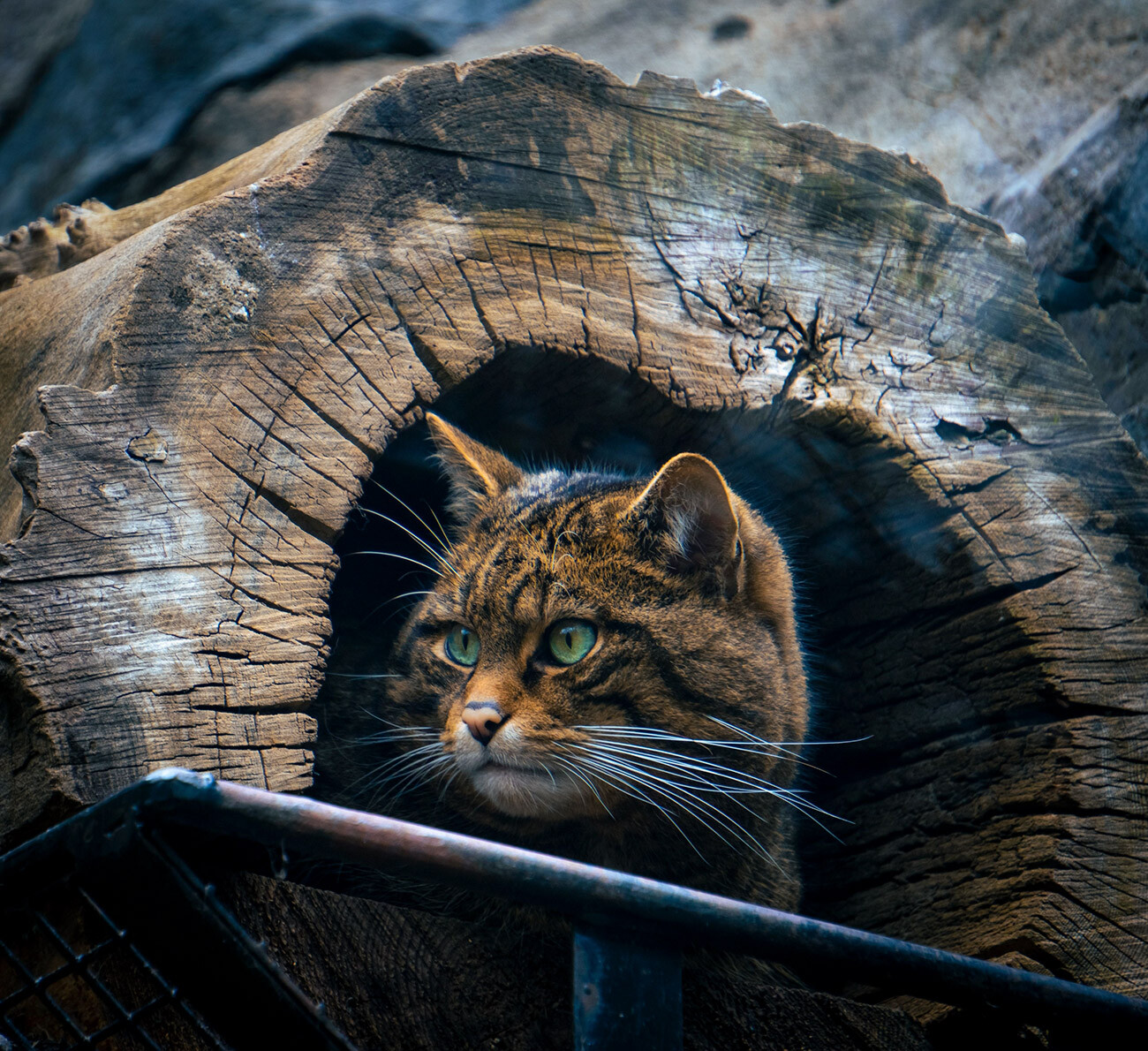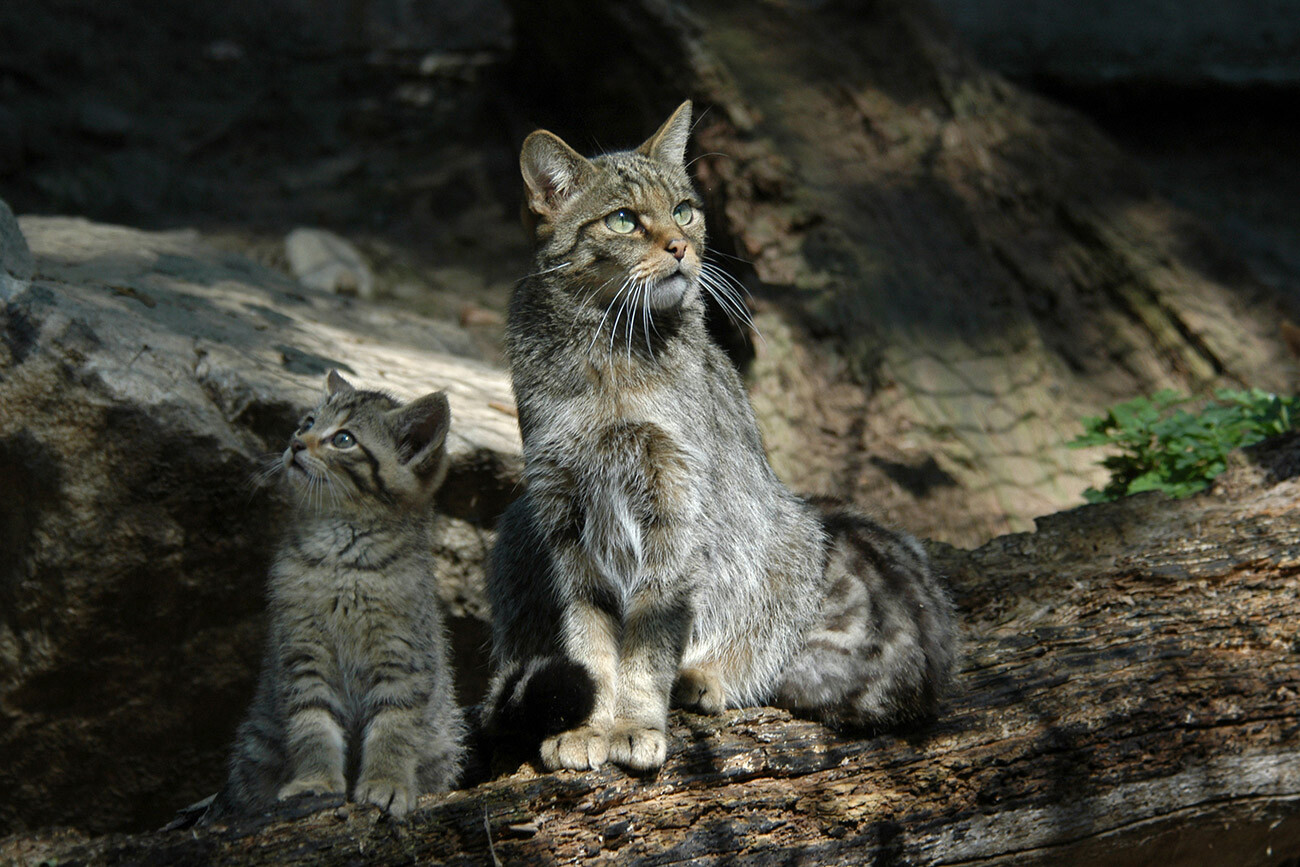The Caucasian wildcat is a relative of the European forest cat. It lives in Dagestan, North Ossetia, Kabardino-Balkaria and other regions of the Russian Caucasus. All cats like to climb higher, but this one is found even at an altitude of up to 3,000 meters above sea level. It chooses remote places and does not have much contact with humans or its relatives. And if you accidentally come across one, you are unlikely to suspect that it is wild and dangerous!

Nevertheless, it hunts not only mice and birds, but also small hares and even fish. It usually ambushes its prey, then killing it quickly and without remorse, biting into the victim's carotid artery. And then, it immediately eats the vital organs - heart, liver, lungs. In short, the victim doesn't stand a chance.
It differs from the domestic cat by its large weight (up to 4-6 kg) and stern appearance. Of course, like any wild animal, it avoids humans, but, during mating season, it can interbreed with domestic cats if they are nearby.

The Caucasian wildcat is a relative of the European forest cat.
Legion MediaThe exact number of the Caucasian wildcat is unknown, but scientists believe that there are only about 3,000 remaining. The cat is, therefore, listed in the Red Book of Russia of endangered species.
Dear readers,
Our website and social media accounts are under threat of being restricted or banned, due to the current circumstances. So, to keep up with our latest content, simply do the following:
If using any of Russia Beyond's content, partly or in full, always provide an active hyperlink to the original material.
Subscribe
to our newsletter!
Get the week's best stories straight to your inbox